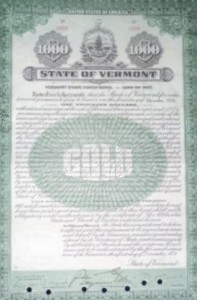As the U.S. Federal Reserve has kept interest rates low for over 6 years now, investors and retirees have searched far and wide to get a yield on their investments. One investment that many people get excited about are tax-free municipal bonds.
These are bonds issued by state, county, or city governments. There are a few types of municipal bonds: revenue bonds that are paid back from projects being financed, general obligation bonds backed by property taxes, housing bonds backed by mortgages, zero-coupon bonds that only pay at maturity, insured bonds in case the municipality defaults, variable or fixed-rate bonds, and others.
What many investors look for in municipal bonds is for them to be double or triple-tax free. Triple-tax free refers to the interest being untaxed on your city, state, and federal tax returns. (Double tax-free refers to those that do not pay city income tax.) Be aware that some municipal bonds are taxable, for example sports stadiums are not free from federal taxes. When you find a bond that is tax-free for you, the next step is to determine its taxable equivalent yield. This refers to calculating how much it would yield if it were taxed – so you can compare it to other taxable bonds to determine if it is a good investment choice for you. For example, if you find a municipal bond paying 4% how do you compare that to a corporate bond paying 4%? By using this formula to calculate the tax-equivalent yield:
Tax Equivalent Yield = Tax Free Yield / (1 – (Your Tax Bracket))
So, if you were in the 30% tax bracket, then your tax-equivalent yield is: .04 / (1 – .30) or .0571 which is (5.71%). So now you can compare taxable bond yields with municipal tax-free bond yields. If you are considering taxable bonds but they are yielding less than 5.71%, then this municipal bond is offering you a better yield, on an after-tax basis.
Please do not purchase a municipal bond or fund without doing some further homework:
- Is this bond double or triple tax-free for you? Municipal bonds are state specific.
- Review if the bond may be called from you before you want it to mature. This may also be called a Sinking Fund where a portion of the debt must be periodically paid off.
- Find the credit rating of the bond issuing entity to find if their credit rating is adequate or has a negative future outlook.
- Determine if the bond is exempt from alternative minimum tax (AMT). Some bonds, such as sports stadiums, will be taxed by AMT even though you do not pay state income tax on the income.
- If the bond is insured, then you must also check the credit rating and future outlook for that insurer to make certain the insurance isn’t worthless.
- Finally, the maturity date of the bond must correspond to when you need to spend the money, otherwise, you are taking on interest-rate risk for which you are not being compensated.

